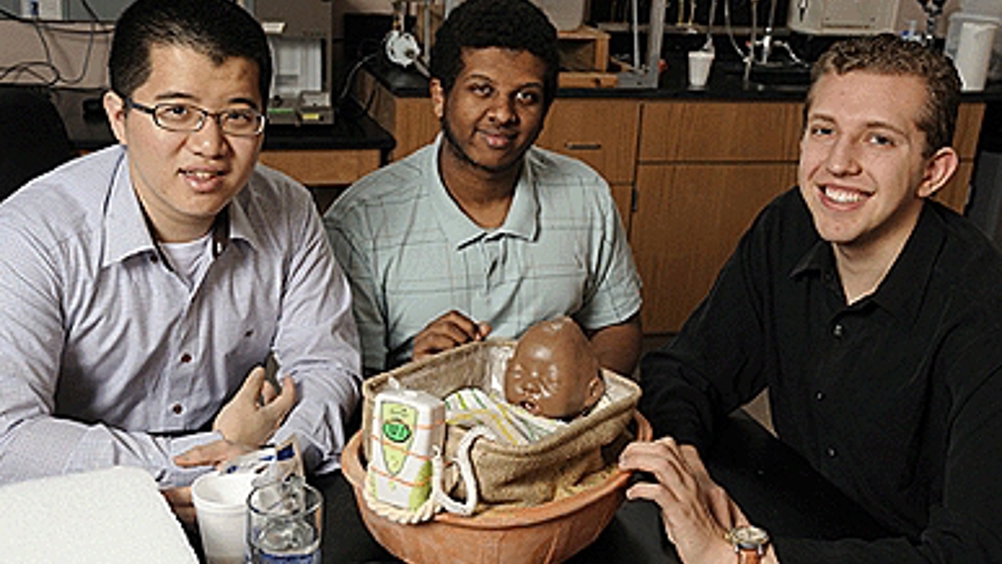Child chiller provides cooling cure
Students at Johns Hopkins University have designed a low-cost, therapeutic hypothermia device designed to prevent brain damage in new born babies.

When babies are deprived of oxygen before birth, brain damage and disorders such as cerebral palsy can occur.
Extended cooling can prevent brain injuries, but this treatment is not always available in developing nations where advanced medical care is scarce.
To address this need, Johns Hopkins undergraduates have devised a low-tech $40 unit to provide protective cooling in the absence of modern hospital equipment that can cost $12,000.
Dubbed Cooling Cure, the device aims to lower a newborn’s temperature by about 6oF for three days, a treatment that has been shown to protect the child from brain damage if administered shortly after a loss of oxygen has occurred.
Common causes of this deficiency are knotting of the umbilical cord or a problem with the mother’s placenta during a difficult birth. In developing regions, untrained delivery, anaemia and malnutrition during pregnancy can also contribute to oxygen deprivation.
In a recent issue of the journal Medical Devices: Evidence and Research, the biomedical engineering student inventors and their medical advisors reported successful animal testing of the Cooling Cure prototype.
Register now to continue reading
Thanks for visiting The Engineer. You’ve now reached your monthly limit of news stories. Register for free to unlock unlimited access to all of our news coverage, as well as premium content including opinion, in-depth features and special reports.
Benefits of registering
-
In-depth insights and coverage of key emerging trends
-
Unrestricted access to special reports throughout the year
-
Daily technology news delivered straight to your inbox










Water Sector Talent Exodus Could Cripple The Sector
Maybe if things are essential for the running of a country and we want to pay a fair price we should be running these utilities on a not for profit...